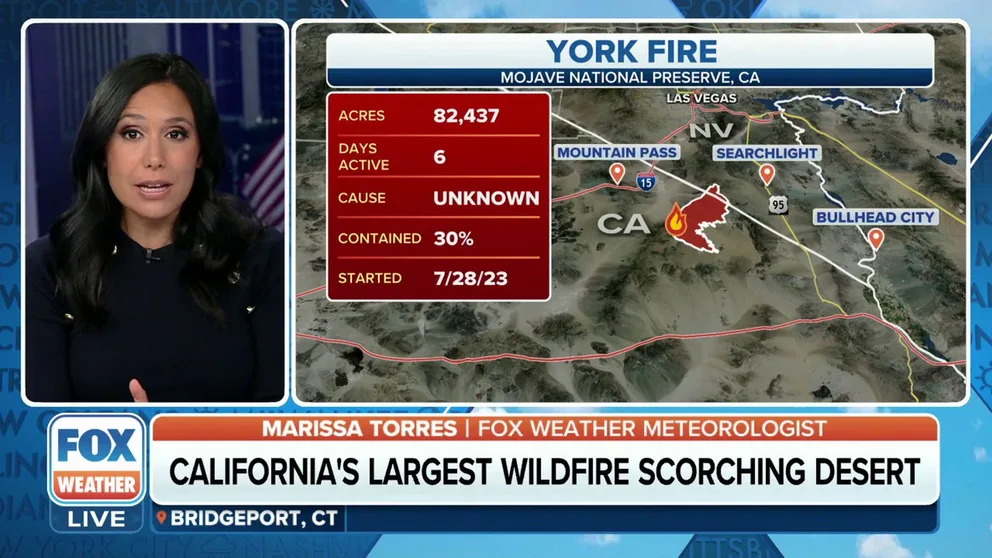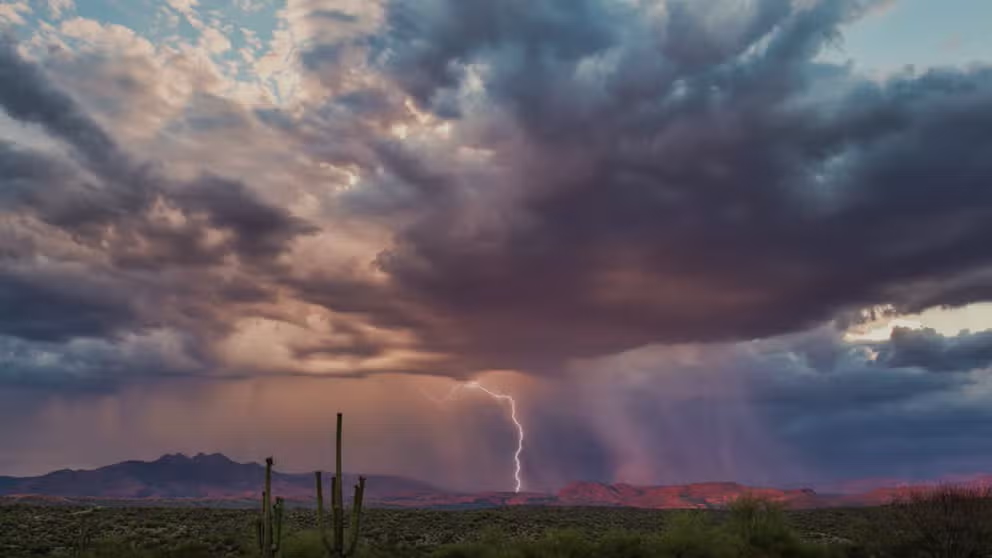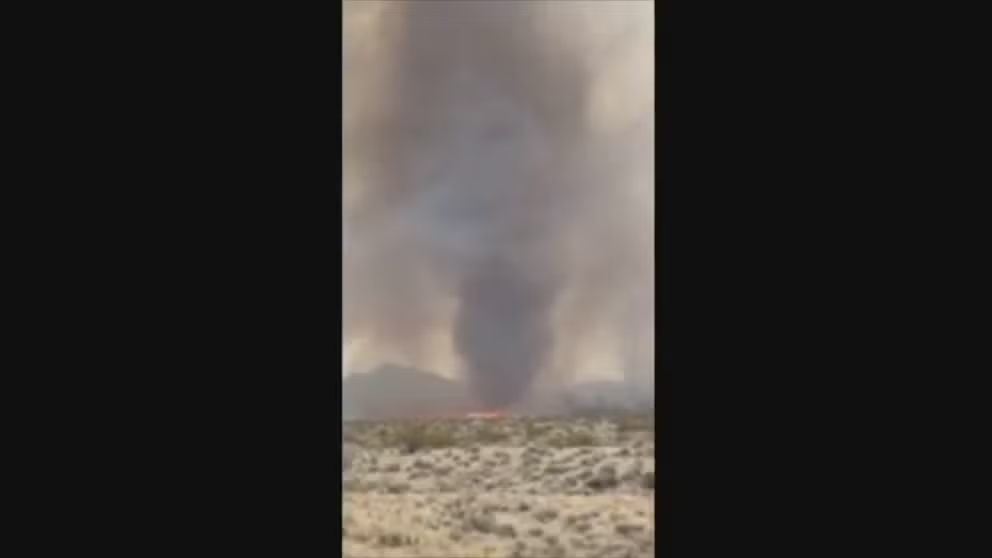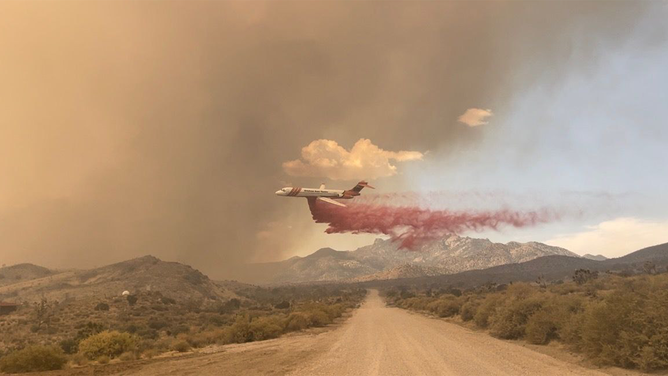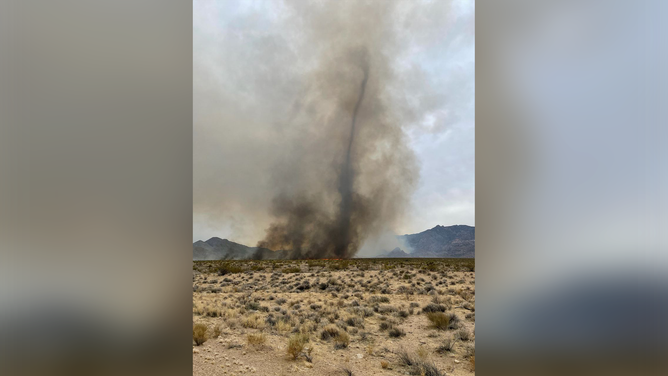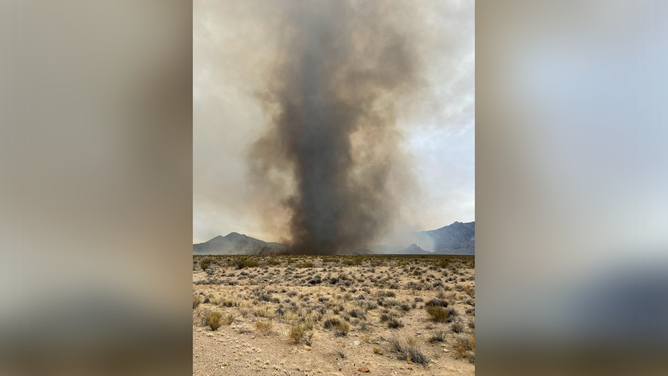Monsoon rains muting York Fire behavior as flames continue spread across Mojave National Preserve
Investigators are still trying to determine the cause of the York Fire, but fire officials say it began on private land within the preserve and quickly spread from San Bernardino County in California into Clark County in Nevada.
California's largest wildfire scorches Joshua Trees
The York Fire in southeastern California has been burning for six days, sweeping through more than 82,000 acres, including those where the famous Joshua Trees grow. August 2, 2023.
MOJAVE NATIONAL PRESERVE, Calif. – Hundreds of firefighters are still working to contain and extinguish the York Fire within California’s Mojave National Preserve that has so far scorched more than 82,000 acres of land and is only 30% contained.
Investigators are still trying to determine the cause of the York Fire, but fire officials say it began on private land within the preserve and quickly spread from San Bernardino County in California into Clark County in Nevada.
Monsoon rains in the Southwest helping York Fire suppression efforts
7 Facts About Monsoon Season
Here are 7 facts about monsoon season.
A monsoonal weather pattern has energized across the Southwest, bringing in rain and wind to the region where flames have been burning the landscape.
However, the strong winds from the monsoon could cause the wildfire to spread more rapidly and can cause flames to move in an unpredictable pattern.
According to MNP officials, the York Fire was observed backing down from an area known as Crescent Peak away from the Nevada border on Tuesday.
SOUTHWEST MONSOON SEASON RAMPS UP, INCREASING FLOOD THREATS FOR DENVER THIS WEEK
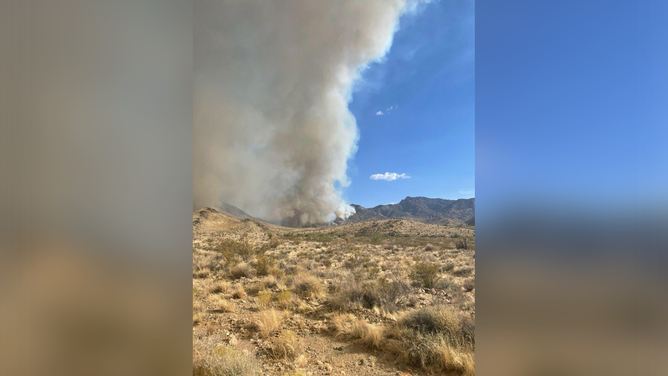
The York Fire burning inside the Mojave National Preserve has scorched more than 82,000 acres and is 30% contained as of Tuesday, August 2, 2023.
(Mojave National Preserve/Facebook)
Heavy rain was observed across the area during the day and allowed for moderated fire behavior, according to a Facebook post from the MNP.
The rains have allowed firefighters to continue building containment lines, reinforce existing containment lines and check for hotspots around the York Fire’s perimeter.
Wildlife threatened by monsoon rain, York Fire
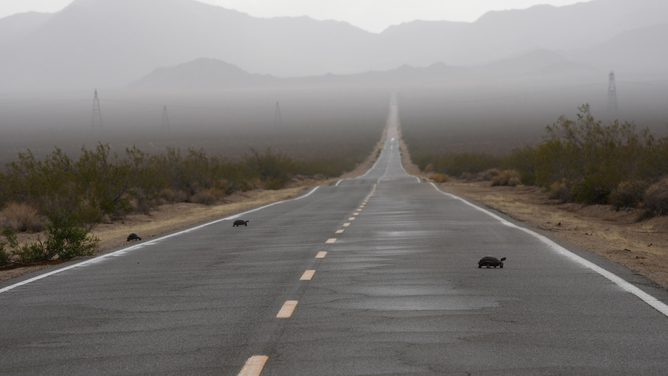
The desert tortoise will emerge from their burrows to search for water after monsoon rain.
(Mojave National Preserve)
The MNP says the monsoon rain is posing a challenge to firefighters not only because it can have an effect on the York Fire, but it’s also bringing out more wildlife.
The desert tortoise, which is a federally threatened species, is active on wet summer days. They emerge from their burrows to drink water from pools on the ground or in depressions in rocks, according to the MNP.
Because more tortoises are out looking for water, firefighters are not only having to keep an eye on the growing York Fire but also avoiding burrows and tortoises.

Yuccas burn during the York Fire in the Mojave National Preserve on July 30, 2023.
(DAVID SWANSON / AFP / Getty Images)
Staff believe the York Fire has caused only minimal damage to the tortoise habitat and has likely only affected a few individuals because tortoise observations in the fire area have been rare.
Preserve officials also said that most desert wildlife are able to move to safety when a fire approaches their area.
‘Fire Whirls’ present added danger to firefighters
Watch: Fire whirls sweep across Mojave National Preserve as York Fire scorches landscape
Cameras captured video of a massive fire whirl that was sweeping across the landscape inside California's Mojave National Preserve as the York Fire scorched the landscape.
The National Park Service (NPS) says more than 400 firefighters are working to contain the fire from the ground and the air but have been met with other challenging conditions, including "fire whirls" and thick smoke.
A fire whirl is a vortex of smoke and flames that form when intense heat and turbulent winds combine, creating a spinning column of fire that resembles a tornado.
"These fire whirls are similar to dust devils but are specifically associated with the heat and energy released by a wildfire," the MNP said on Monday. "They can range in size from a few feet to hundreds of feet in height, and their rotational speed can vary widely."
The situation is hazardous for firefighters because the fire whirls can spread embers across all directions, igniting new fires.
HOW THE LAY OF THE LAND AFFECTS WILDFIRE BEHAVIOR
In addition, the fire whirls can change directions quickly, making them unpredictable.
The firefighting efforts have been a coordinated response between resources from the National Park Service, the Bureau of Land Management, the San Bernardino Fire Protection District and the Clark County Fire Department.
Quiet start to the California fire season
The York Fire is the Golden State's largest wildfire of the year for what has been a down period for fire activity in the state.
According to CAL FIRE, just under 100,000 acres have burned, which is only around 27% of average.
The FOX Forecast Center credits an unusually wet winter and spring for contributing to the reduced fire activity.
According to the U.S. Drought Monitor, slightly more than a quarter of the state is experiencing either unusually dry or drought conditions.
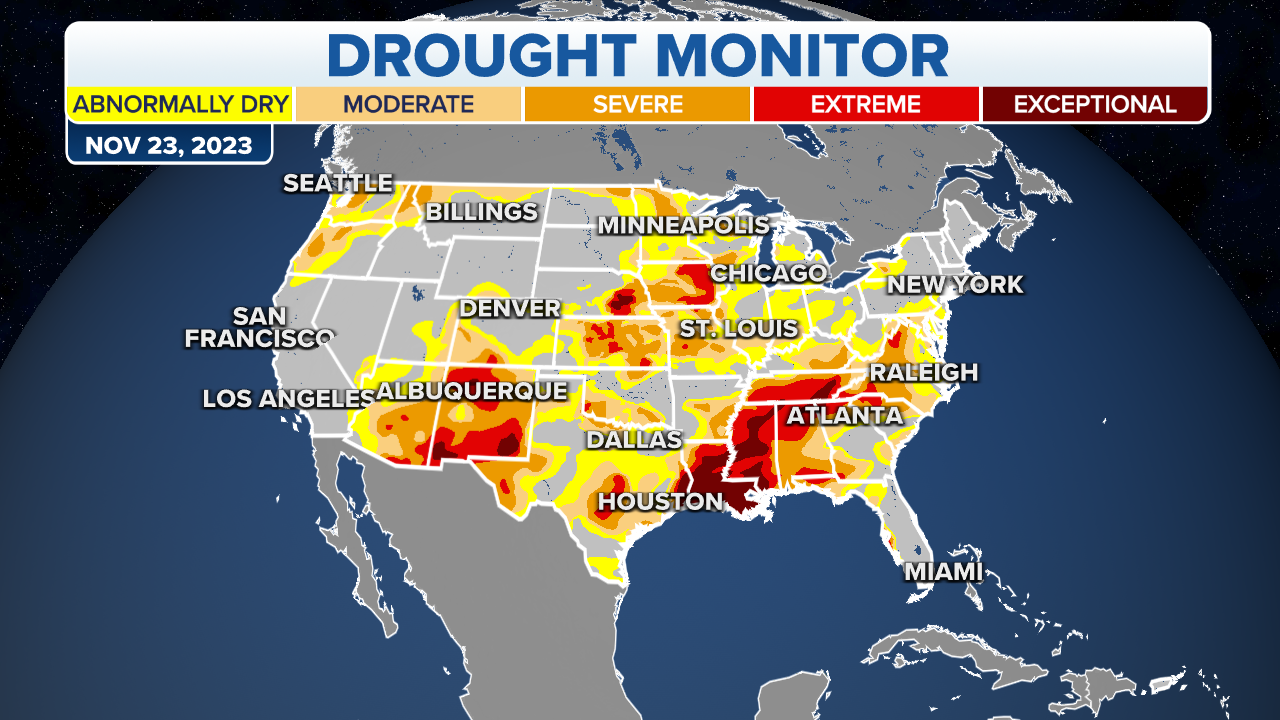
(FOX Weather)
